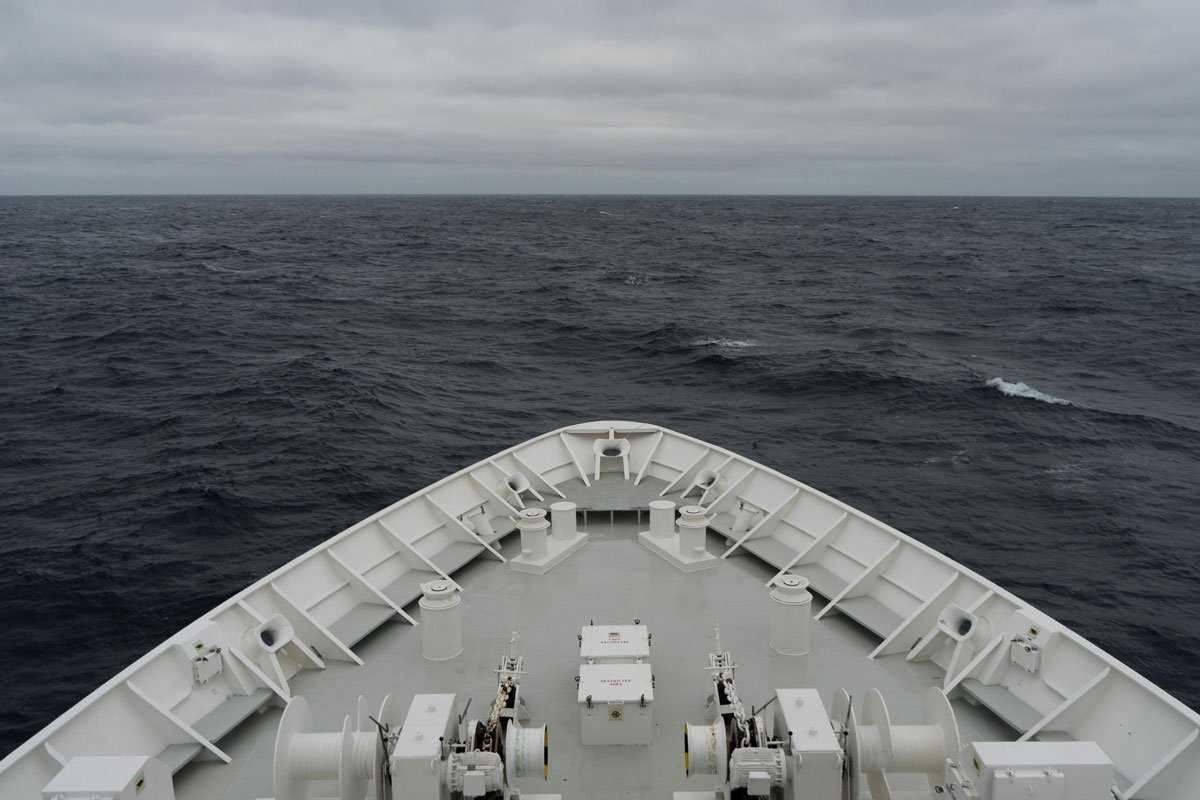The seas were relatively forgiving for the start of our crossing, providing no more than the gentlest rocking motion as we headed east. From first light it was apparent that a large group of seabirds was following close behind us. It’s easy to see sea days merely as time to be passed, or for a time to recoup energy between destinations. In reality, sea days often provide us with the greatest range of species of all our days on board, particularly in the form of sea birds. Giant petrels form a large part of our entourage, along with various other species of petrel. At a distance, royal and wandering albatross can be seen wheeling over the waves, occasionally veering closer to the ship. Many of these birds breed in or close to the islands that we’re visiting, but the sea is truly their home with us being the ones out of place.
As the day progressed we grew closer and closer to the Antarctic convergence. This is the interface between the cold polar waters of the Antarctic and the warmer waters to the north. The boundary is several miles across so it rarely obvious in any visual way (though sometimes it causes a fog bank of sorts), but by observing the ship’s instruments it is possible to detect the rapid drop in sea temperature. This change heralds our crossing into the true waters of Antarctica, and the beginning of our time in one of the most extreme places on earth.







